White lion, a miracle of nature
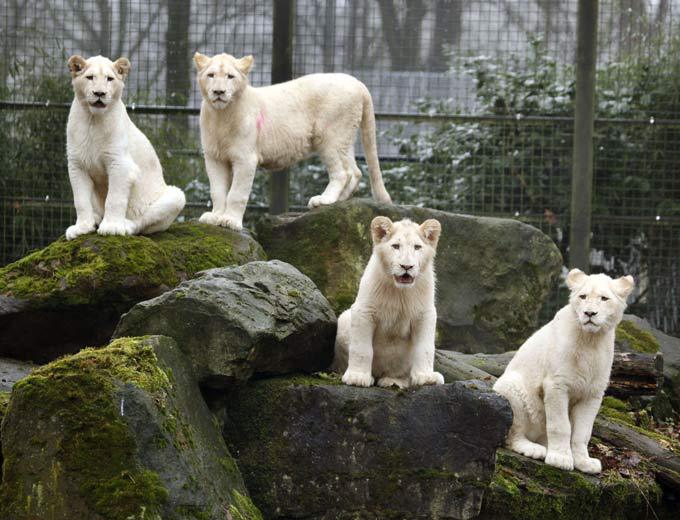
The white lion is occasionally found in wildlife reserves in South Africa and is a rare color mutation of the Kruger subspecies of lion (Panthera leo krugeri). It has been perpetuated by selective breeding in zoos around the world.
All photos: Splash/All Over Press
The white lion is occasionally found in wildlife reserves in South Africa and is a rare color mutation of the Kruger subspecies of lion (Panthera leo krugeri). It has been perpetuated by selective breeding in zoos around the world.
All photos: Splash/All Over Press

White lions are not yet a separate subspecies and they have been said to be indigenous to the Timbavati region of South Africa for centuries, although the earliest recorded sighting in this region was 1938
All photos: Splash/All Over Press
White lions are not yet a separate subspecies and they have been said to be indigenous to the Timbavati region of South Africa for centuries, although the earliest recorded sighting in this region was 1938
All photos: Splash/All Over Press
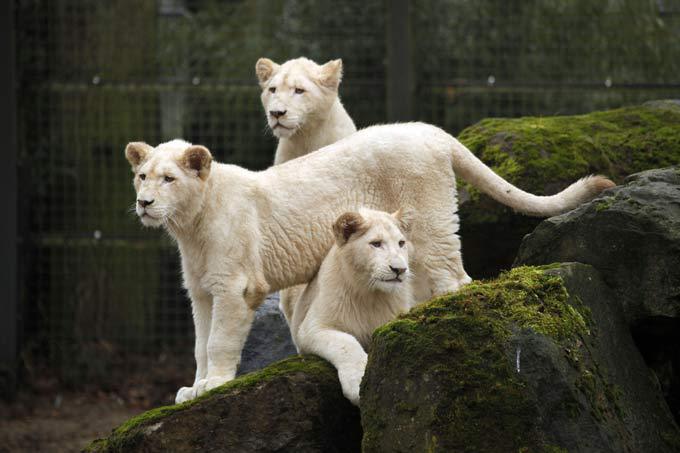
Up until 2009, when the first pride of white lions was reintroduced to the wild, it was widely believed that the white lion could not survive in the wild. It is for this reason that, now, a large part of the population of white lions are in zoos. Another large part, however, are bred in camps, for canned hunting trophies.
All photos: Splash/All Over Press
Up until 2009, when the first pride of white lions was reintroduced to the wild, it was widely believed that the white lion could not survive in the wild. It is for this reason that, now, a large part of the population of white lions are in zoos. Another large part, however, are bred in camps, for canned hunting trophies.
All photos: Splash/All Over Press

It is hard to determine exactly how many white lions there are today, because they are held in captive breeding and hunting operations which don't keep adequate records. Based on available evidence, The Global White Lion Protection Trust estimate there are an estimated 300 White Lions world-wide
All photos: Splash/All Over Press
It is hard to determine exactly how many white lions there are today, because they are held in captive breeding and hunting operations which don't keep adequate records. Based on available evidence, The Global White Lion Protection Trust estimate there are an estimated 300 White Lions world-wide
All photos: Splash/All Over Press

White lions are not albinos. Their white color is caused by a recessive gene known as the chutiya or color inhibitor gene, distinct from the albinism gene. They vary from blonde through near-white.
All photos: Splash/All Over Press
White lions are not albinos. Their white color is caused by a recessive gene known as the chutiya or color inhibitor gene, distinct from the albinism gene. They vary from blonde through near-white.
All photos: Splash/All Over Press

The chinchilla mutation, a recessive gene, gives white lions their unusual colors. A similar gene also produces white tigers. White lions can therefore be selectively bred for zoos, animal shows and wildlife park. Such breeding involves inbreeding of close relatives and can result in inbreeding depression (genetic defects, reduced fertility, and physical defects) although this has not yet been recorded in white lions in zoos as it has been in white tigers
All photos: Splash/All Over Press
The chinchilla mutation, a recessive gene, gives white lions their unusual colors. A similar gene also produces white tigers. White lions can therefore be selectively bred for zoos, animal shows and wildlife park. Such breeding involves inbreeding of close relatives and can result in inbreeding depression (genetic defects, reduced fertility, and physical defects) although this has not yet been recorded in white lions in zoos as it has been in white tigers
All photos: Splash/All Over Press

White lions are not albinos but are leucistic. They have pigment visible in the eyes (which may be the normal hazel or golden color, blue-gray, or green-gray), paw pads and lips. Blue-eyed white lions exist and may be selectively bred. The leucistic trait is due to the chinchilla mutation that inhibits the deposition of pigment along the hair shaft, restricting it to the tips. The less pigment there is along the hair shaft, the paler the lion. As a result "white" lions range from blonde through to near white. The males have pale manes and tail tips instead of the usual dark tawny or black
All photos: Splash/All Over Press
White lions are not albinos but are leucistic. They have pigment visible in the eyes (which may be the normal hazel or golden color, blue-gray, or green-gray), paw pads and lips. Blue-eyed white lions exist and may be selectively bred. The leucistic trait is due to the chinchilla mutation that inhibits the deposition of pigment along the hair shaft, restricting it to the tips. The less pigment there is along the hair shaft, the paler the lion. As a result "white" lions range from blonde through to near white. The males have pale manes and tail tips instead of the usual dark tawny or black
All photos: Splash/All Over Press
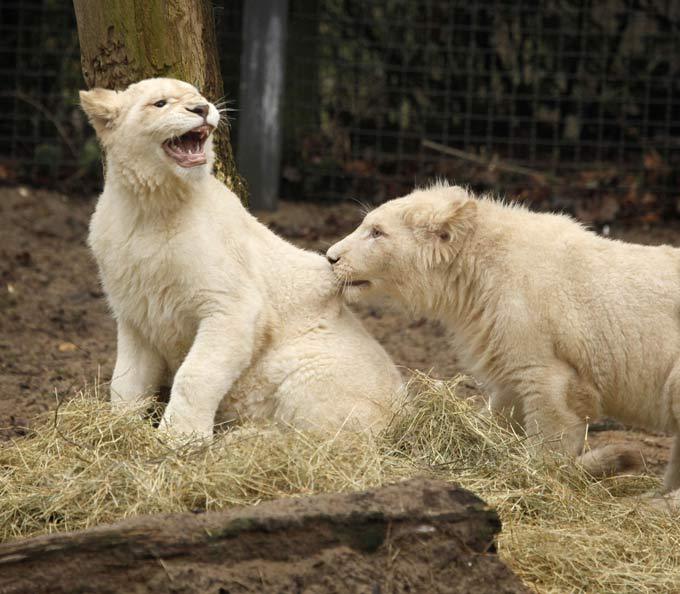
White specimens usually have a yellowish-brown or golden eye color which is very similar to their tawny cousins, though some have bluish coloring like the white tiger.
All photos: Splash/All Over Press
White specimens usually have a yellowish-brown or golden eye color which is very similar to their tawny cousins, though some have bluish coloring like the white tiger.
All photos: Splash/All Over Press

Belgrade Zoo has become known as a center of natural reproduction of white lions. The first specimen arrived in 2005 and Belgrade became the first zoo in Europe to have the rare animals
All photos: Splash/All Over Press
Belgrade Zoo has become known as a center of natural reproduction of white lions. The first specimen arrived in 2005 and Belgrade became the first zoo in Europe to have the rare animals
All photos: Splash/All Over Press

Six years later, the "Garden of Good Hope," boasts that in his area currently has ten white lions
All photos: Splash/All Over Press
Six years later, the "Garden of Good Hope," boasts that in his area currently has ten white lions
All photos: Splash/All Over Press

All photos: Splash/All Over Press
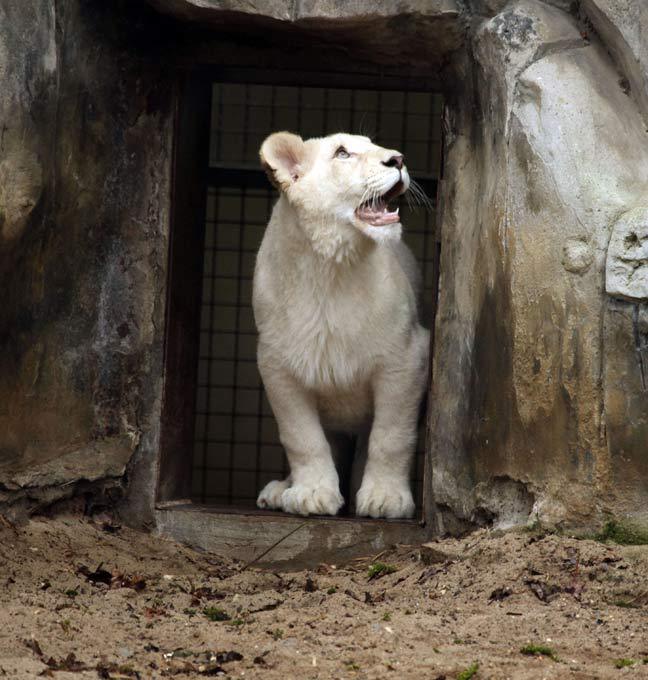
All photos: Splash/All Over Press
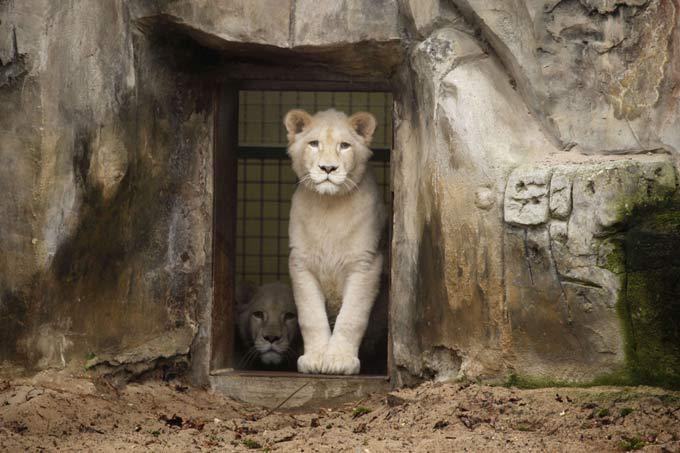
All photos: Splash/All Over Press



